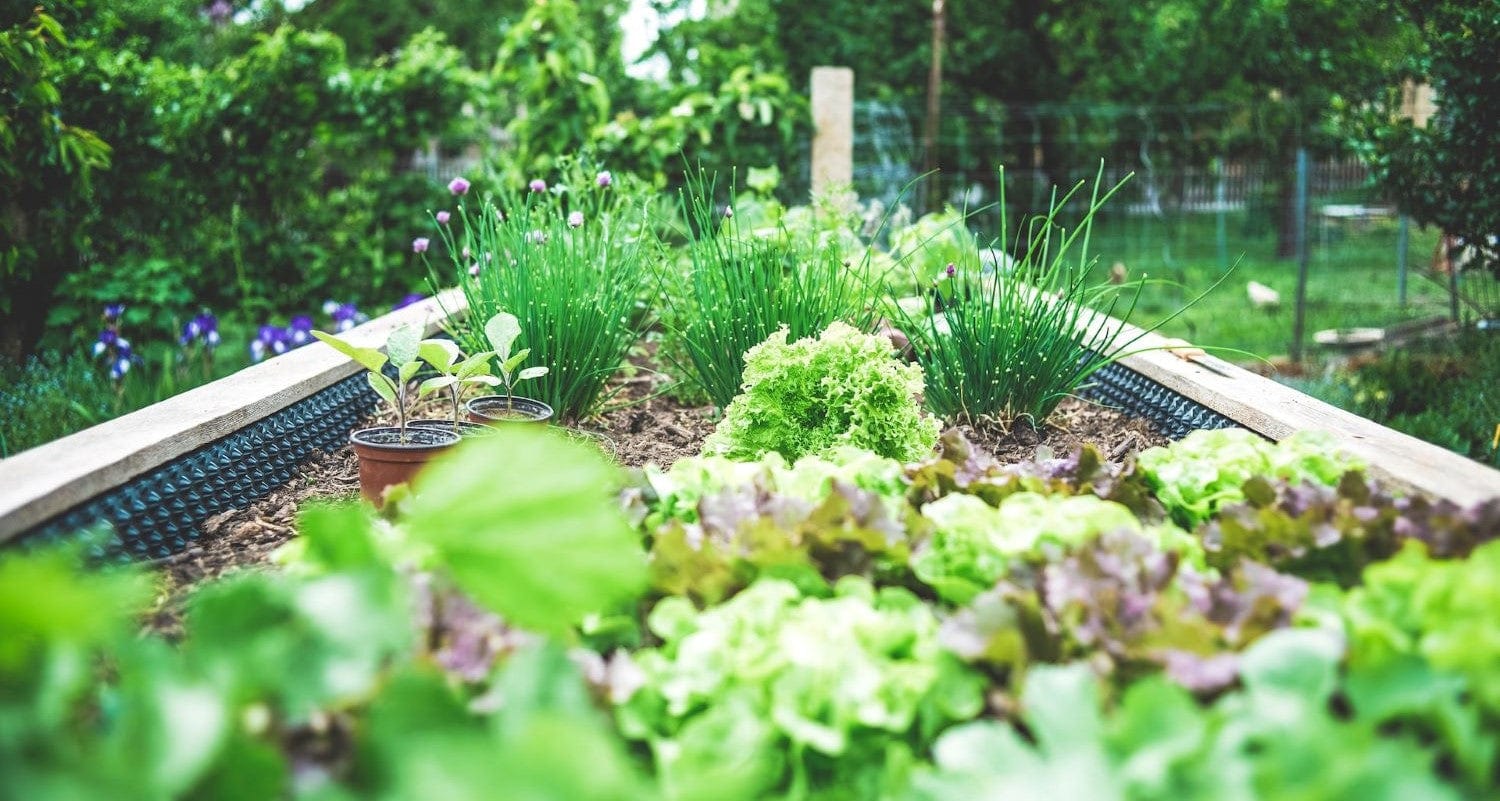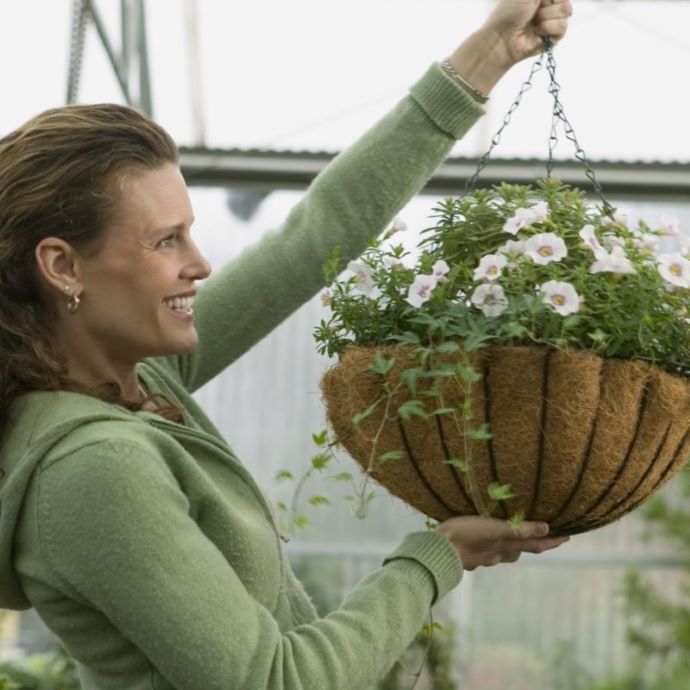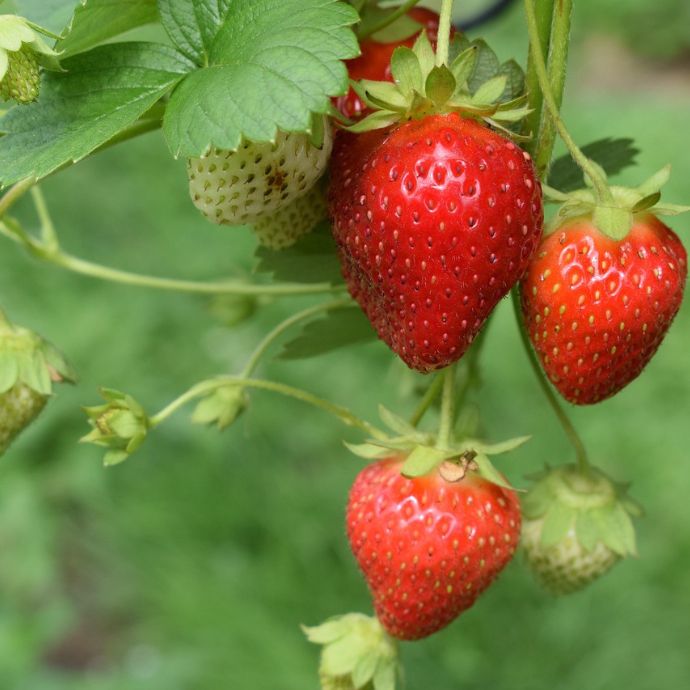Kitchen Garden Ideas for a Doorstep Harvest

A kitchen garden is a small, compact vegetable plot, usually planted very near to your home so that you can easily access fresh produce. It’s a great way to get the most out of your garden without having to put in the amount of work that a full scale vegetable garden requires.
Why not get some inspiration from these traditional kitchen gardens? They’re designed to use the available space to its best advantage and provide all the veg you need all year round, and the good news is that kitchen garden style can be replicated in even the smallest space. Here’s how to get started.
Jump to:
Planning your plot
Since you’re planning a kitchen garden, it makes sense to site it as near as possible to your kitchen. Then when you need a sprinkle of herbs, a handful of green beans or a fresh lettuce, you can grab it quickly and get on with your recipe.
Most vegetables and herbs need full sun to produce a good crop, so you should choose a warm, sheltered spot for your kitchen garden if you can. Don’t despair if your garden isn’t exactly a suntrap - many vegetables do fine with a little less light, including root vegetables, brassicas and leafy greens. Easy access to water is another must - is your kitchen garden near a tap or water butt? Will the hosepipe reach?
Does your kitchen garden have to be all in the same place? Absolutely not! You can plant up a few pots or small raised beds wherever you have space or even use your borders. For more ideas, check out our guide to vegetable garden design.

Raised beds
Raised beds are a very popular way of growing vegetables that use space efficiently while enabling you to control the growing conditions more closely. They’re also fantastic if you find bending down or digging difficult. You can buy ready made raised beds, build your own or use what you already have - some of mine are converted from old storage boxes, drawers and even a kitchen cabinet. Smaller raised beds can be used for single crops and rotated each year and larger ones can be divided up into smaller squares.

Pots
For an extra quick and easy kitchen garden, plant in pots - but choose your plants carefully, making sure to go for compact or dwarf varieties and choosing bush tomatoes over cordons. Herbs are perfect for containers or window boxes, and you can also get wonderful results from potted peppers, salad leaves, spring onions, kale and more. Get more inspiration from our guide to growing veg in pots.

Next level
Why not expand your vegetable growing space upwards by adding an obelisk, arch or small pergola to your plot? You can then enjoy peas, beans, squashes or cucumbers without sacrificing too much space on the ground. Get extra clever by planting tumbling tomatoes, dwarf chillies and herbs in hanging baskets (keeps the slugs away too!).

What to plant
With a bit of careful planning, you’ll be able to grow the vegetables you like best, in the quantities you need. There are a few things you need to consider before choosing.
1. How much space do you have?
It’s always tempting to squeeze in one or two more, but do check how large your plants are going to be when they’re fully grown and always space them according to the measurements on our website. Planting too close together can result in smaller produce, fungal infections or poor growth due to too many plants competing for the same nutrients. Unless you have a very large plot, I’d recommend steering clear of pumpkins, large cabbages and sweetcorn - what you’re going for here is maximum crops in minimum space.
2. What do you use the most?
You don’t need to plant the same number of each vegetable in neat rows. If you only occasionally like beetroot but eat lettuce every day, simply plant less of one and more of the other. The objective here is not to produce a surplus, but to keep your kitchen ticking along nicely.
3. What’s expensive or hard to get in the shops?
In a small plot, there’s no real point filling the space with cheap and plentiful vegetables like carrots and onions. Plant a few by all means, but it can be more cost effective to focus on things like purple sprouting broccoli, heirloom tomatoes or unusual vegetables that you would pay megabucks for in the shops if you could get them at all - and of course you can grow organic and save even more!
4. How much do you need?
A friend of mine (it’s not me, honest) planted sixteen pumpkin plants then found out they could produce up to fifty pumpkins between them. If you don’t love something THAT much, plant just a few. A single courgette plant, for example, can produce four or five courgettes a week, which is probably as many as you can - or want to - eat.
5. What time of year are you planting?
Most vegetables are planted in spring and harvested in summer, but once these main season crops are over, there’s no reason to leave your kitchen garden empty. Chard, beets, carrots, lettuces and more can all be planted in autumn and harvested throughout the winter to keep you in fresh food all year round.

Caring for your vegetables
Firstly and most importantly, make sure that your soil is rich, drains easily and isn’t too heavy. If your soil is on the sandy or heavy clay side, you’ll need to mix in plenty of compost and perlite.
Water your vegetables regularly, especially in summer when this might mean watering daily - particularly if you have thirsty crops like tomatoes.
Some vegetables will also benefit from feeding - but don’t bother with lots of different plant-specific fertilisers. A bottle of tomato feed will benefit any vegetable that produces flowers, including courgettes, squashes and beans. Even better, make your own.
For plant specific advice, check out the individual vegetable growing guides in our support centre.

Pest control for your kitchen garden
Since you’re growing plants to eat, the last thing you want to do is use chemicals to keep the slugs, caterpillars and aphids at bay. Companion planting is a natural alternative that provides not only effective pest control, but visual appeal too - many of them are even edible. Grow strong-smelling mint, chives, lavender or garlic to keep them at a distance, lure them away from your veggies with tasty nasturtiums or encourage predators like ladybirds and beetles with marigolds and fennel. Find out more with our complete companion planting guide.

Last updated: 13/11/2023




















